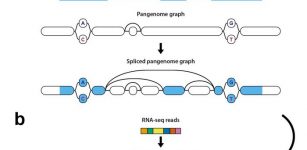Scientists Struggle To Find Out If Humans Really Had Fur Once And Why We Are So Hairless
Eddie Gonzales Jr. – MessageToEagle.com – Can you imagine humans covered in fur? Scientists are attempting to unravel a great mystery – why are humans so hairless?
Researchers have previously said that our ancestors had a tail and they lost it twice. As MessageToEagle reported, “what we, modern humans have today is only a “vestigial” tail, an evolutionary leftover. It is visible in embryos, but by the time we are born, we only have a few small bones that cannot be seen from the outside.
The tail bone is vestigial, an organ or trait in humans that have lost their original function through evolution. The tail bone is actually a part of a larger group of features that have gone out of use.

Why we lost our tail has been a scientific mystery, but new research conducted by paleontologists from University of Pennsylvania sheds some light on this evolution enigma.”
A recent study conducted by researchers at the University of Pennsylvania’s Perelman School of Medicine attempts to shed light on why humans became almost entirely hairless apes. The different hair patterns appear across human bodies is very difficult to explain.
“We have really long hair on our scalps and short hair in other regions, and we’re hairless on our palms and the underside of our wrists and the soles of our feet,” she says. “No one understands really at all how these differences arise,” Sarah Millar, co-senior author of the new study and a dermatology professor at the University of Pennsylvania’s Perelman School of Medicine said.
Aquatic Ape Theory And Other Explanations
The reason why humans are more or less hairless has been debated for ages. Many researchers think the Aquatic Ape Theory can explain what happened with our fur.
According to the Aquatic Ape Theory the ancestors of modern humans were more aquatic and as such were habitual waders, swimmers and divers.
The theory was proposed in by the marine biologist Alister Hardy in 1960. Hardy argued that a branch of apes was forced by competition over terrestrial habitats to hunt for food such as shellfish to adapt and it led to the development of other characteristics. These new creatures, who were ancestors of modern humans became hairless and bipedal.
The Aquatic Ape Theory has been criticized and has few supporters among scientists. Evolutionary scientist Mark Pagel at the University of Reading proposes our loss of fur was a way to control lice and other parasites.
Other researchers such as for example, Mark Changizi, an evolutionary neurobiologist and director of human cognition at the research company 2AI think we lost hair on our faces because we wanted to improve emotional communication.
Many animals have two receptors in their eyes that can detect colors, but humans have three. Our third cone is unusual because it gives us a little extra power to detect hues right in the middle of the spectrum, allowing humans to pick out a vast range of shades that seem unnecessary for hunting or tracking.
See also:
What Will Humans Look Like In The Future? Some Possible Scenarios
A Look Into The Future: Can Planet Earth Support 10 Billion People?
Is This What Humans Will Look Like In Millions Of Years From Now?
Changizi thinks that the third cone allows us to communicate nonverbally by observing color changes in the face. “Having those two cones detecting wavelengths side by side is what you want if you want to be sensitive to oxygenation of hemoglobin under the skin to understand health or emotional changes,” he says.
For instance, a baby whose skin looks a little green or blue can indicate illness, a pink blush might indicate sexual attraction, and a face flushing with red could indicate anger, even in people with darker skin tones. But the only way to see all of these emotional states is if humans lose their fur, especially on their faces.
Whether humans really had fur once and lost is remains unknown. It will take a while before we find out.
Written by Eddie Gonzales Jr. – MessageToEagle.com Staff Writer











